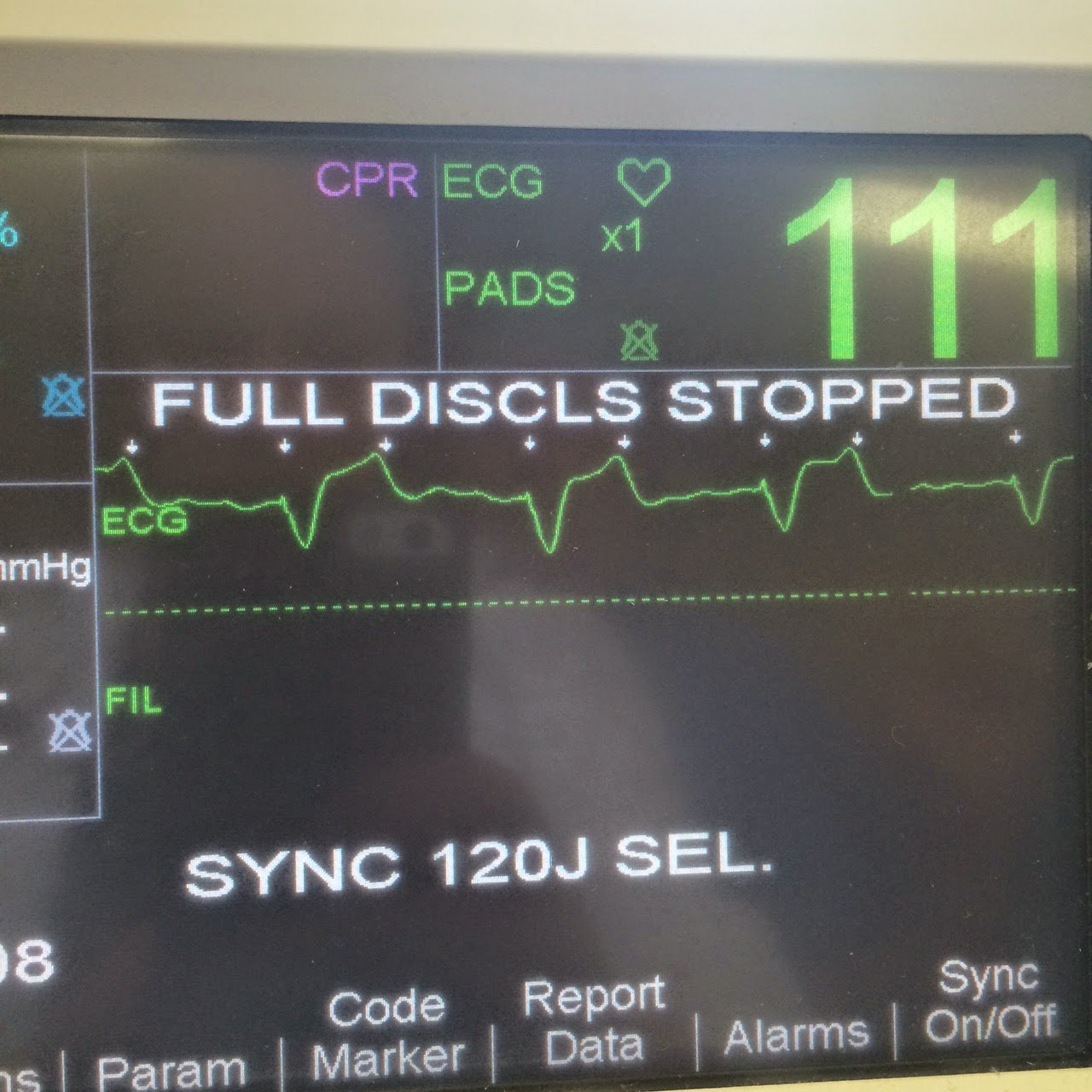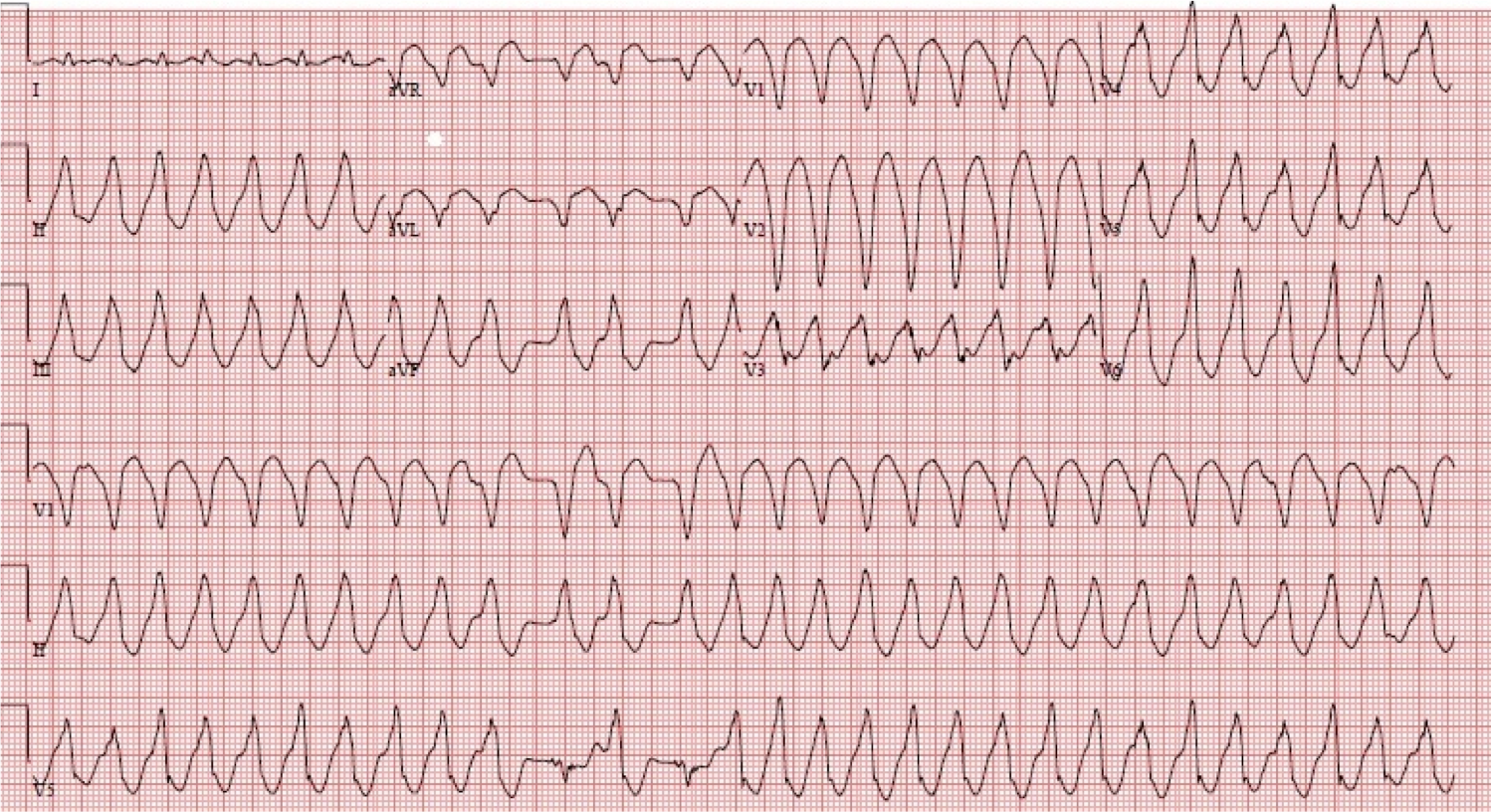A 33 year old male had 2 days of chest pain, intermittently relieved with acetaminophen (paracetamol) and diclofenac. He came to the ED after 5 hours of constant chest pain. He had a possible history of fever.
He had this initial ECG:
The diffuse ST elevation led the emergency physician to believe that this might be Takotsubo Stress Cardiomyopathy. He also thought, due to the fever, that it might be myo-pericarditis. So he did a bedside echo:
Keep watching, there are several views:
The base of the heart has excellent concentric function, but the apex is “ballooning:” the entire apex functions poorly. This is typical of takotsubo (the name refers to a Japanese octopus trap which has a narrow mouth and ballooning apex so that an octopus cannot escape it). These images confirmed his suspicion that this diffuse ST elevation was due to takotsubo.
He recorded another ECG 2 hours later:
 |
| There is less ST elevation now. |
At this point, he decided to send the patient to a PCI facility, just in case.
He immediately sent me these ECGs and the echo and asked my opinion.
I responded that there is far too much ST elevation for this to be Takotsubo. That, by ECG, this is a proximal occlusion of a “wraparound” LAD that supplies not only the anterolateral walls, but the inferior wall. So it is an anterior/inferior/lateral STEMI. As for the ultrasound, it
is strange that there is not more wall motion abnormality. So of
course takotsubo is on the ddx. But the apex reflects all 3 walls too.
This is STEMI, not Takotsubo.
“What was the outcome?”
Answer:
Yes.. I got the results
It was proximal wraparound LAD, stented..
It seems the ECG alone is enough
And echo might confuse the picture
Thanks again
CK 3300 CKMB200 trop 35
Kosuge et al. http://content.onlinejacc.org/article.aspx?articleid=1204510, found that ST depression in aVR combined with absence of ST elevation in V1 was highly predictive of Takotsubo vs. LAD occlusion. If this rule had been followed, it would have been wrong! It is an exception to the rule.
Learning Point:
There is more to assessing the ECG that this simple rule. Takotsubo and LAD occlusion can exactly mimic each other. Just be the height of ST elevation, I could tell this was NOT Takotsubo, in spite of the echo and the ECG rule.





How about the article that says ST depression in aVR and lack of STE in V1 can differentiate takotsubo from stemi. I also think less reciprocal ST depression inferior leads. But I think they all need to go to cath lab anyway.
http://content.onlinejacc.org/article.aspx?articleid=1204510
Dominic Larose MD
very helpfull as a model to keep in mind
Dominic,
Great point. This fits Kosuge's criteria perfectly.
And I agree with you that they should all go to the cath lab, if there is one.
Of course, if the only choice is thrombolytics, then these considerations are very important!
Thanks,
Steve Smith
So, is this an exception to the rules in the article?
But the conclusion is that this an LAD occlusion, at the same time the criteria for Takotsubo aply.And it can't be both as far as i can understand. I hope that I'm not missing something obvious.
My mistake! This IS an exception. There is ST depression in aVR and absence of ST elevation in V1, which would predict Takotsubo!
Then this is a pretty rare situation since the specificity and sensitivity for the criteria are over 90%. Thank you for your answers and interstings cases as always.
Yes, and thank you for correcting me!
Steve Smith
GREAT case – THANKS for presenting. Always excellent to add the accompanying Echos as you routinely do. As impressive as the JACC abstract by Kosuge is – given how OFF their prediction of Takotsubo is in this case (despite ST dep in aVR and lack of ST elevation in V1) – it is hard to consider still using their sugested "rule" …. I would think demographics (young adult age of this male patient) would suggestive a much greater baseline prevalence for anterior stemi rather than Takotsubo that is more common in elderly women (though of course nothing is perfectly predictive). THANKS again for presenting!
One would be mistaken to use the rule in such a case as this of obvious STEMI, but it could help to confirm one's suspicion in this case, in which I diagnosed Stress cardiomyopathy: http://hqmeded-ecg.blogspot.com/2014/09/diffuse-st-elevation-what-do-you-think.html
BTW that was my point: whatever these criteria say, cath lab is the way to go if at all available
may be the 2 dx at same time? TTC in the context of OMI?
moreover, the patologic Q waves in anterior leads make TTC less possible (but non impossible)
https://dx.doi.org/10.1161%2FJAHA.116.003418
no need to entertain 2 diagnoses when one fits it perfectly
Agree!
Isn't there an r Wave in V2?
YES — There is an r wave ( = a small, positive initial deflection) in lead V2, and perhaps also a tiny r in V3 — but the r in lead V2 is SMALLER than the R in V1 — and that every-so-tiny r in V3 is even smaller — so there is “LOSS of r wave” in the anterior leads. At times — “loss of anterior r wave” can have similar clinical significance as QS complexes.